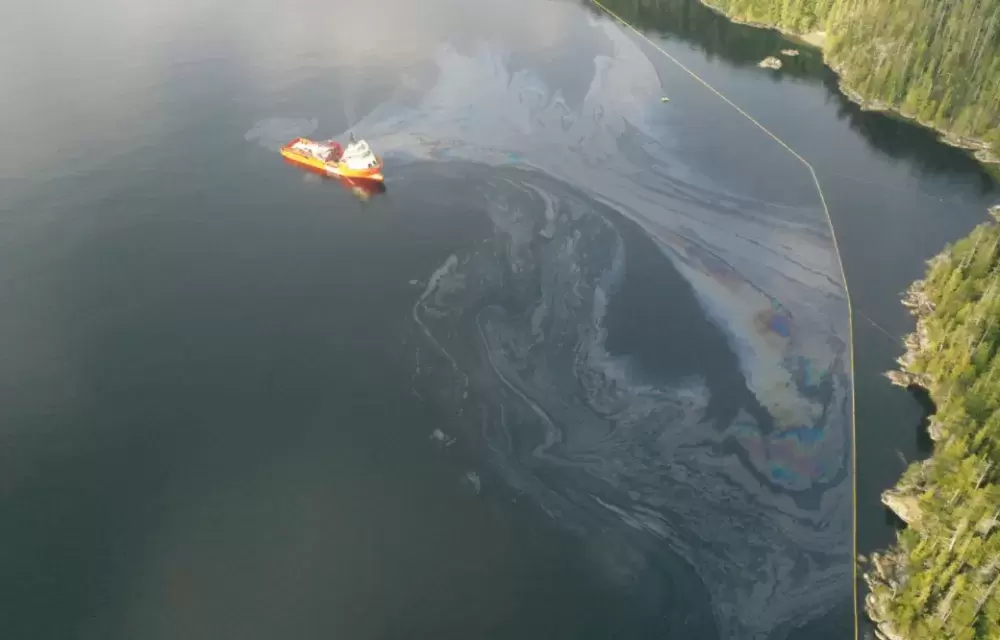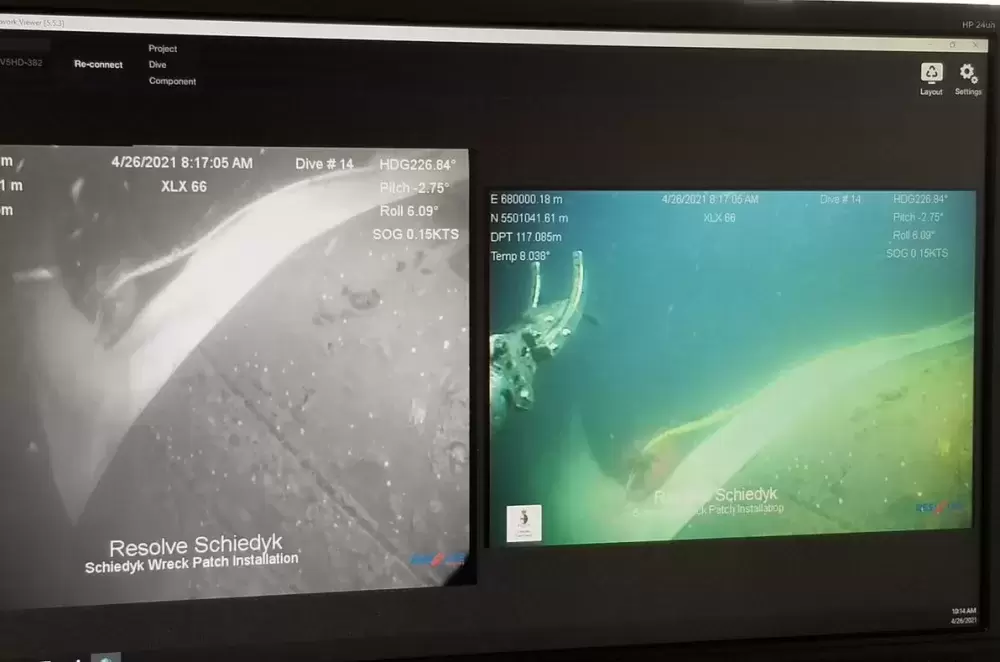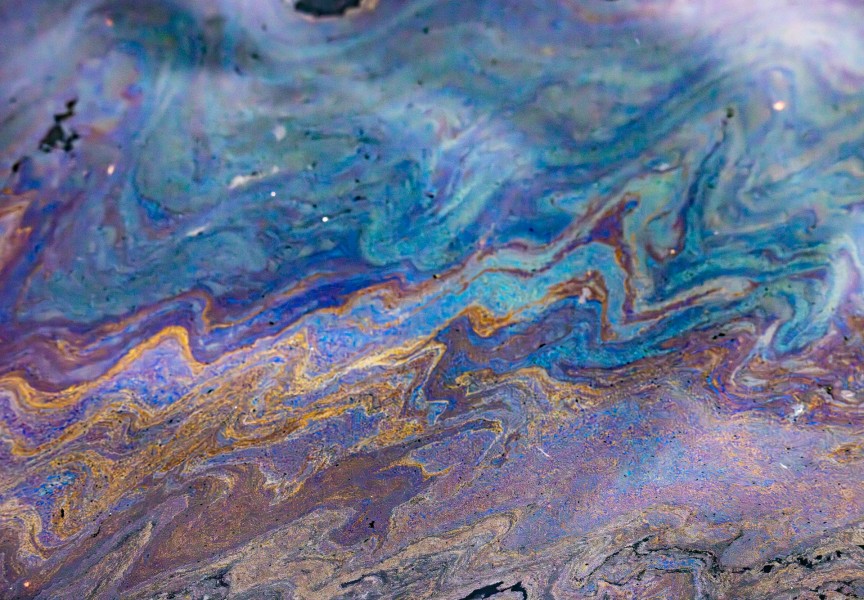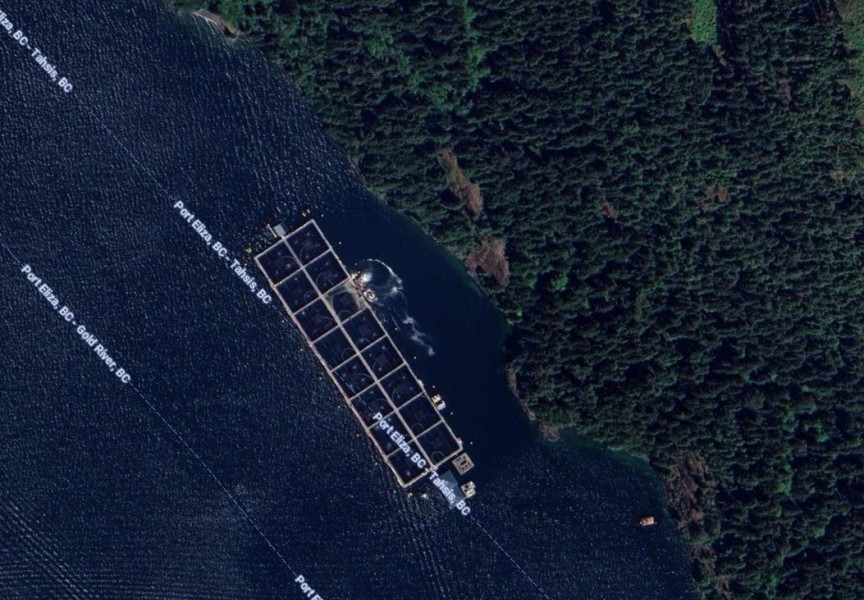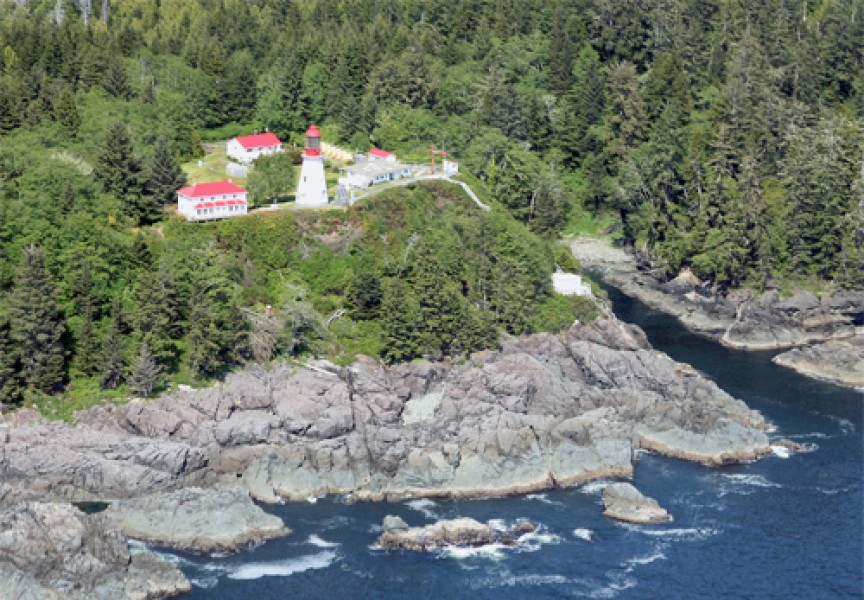A marine salvage contractor has patched a sunken freighter leaking fuel in Nootka Sound and identified next steps in a complicated deep-water spill response.
Despite this — and the gift of good weather — operations to stop fuel leaking from the 1968 wreck are far from over, said Gillian Oliver, Coast Guard incident commander.
Resolve Marine Group placed patches on the hull of the MV Schiedyk in late April using a remotely operated vehicle (ROV), six months after fuel sheening was observed on waters off Bligh Island.
The Florida-based firm, specialized in complex emergency salvage and response, was contracted by DFO/Coast Guard in March to survey the wreck and complete a technical assessment. Those tasks were completed in a couple of weeks. A unified command — Canadian Coast Guard, Ministry of Environment and Climate Change Strategy and Mowachaht/Muchalaht First Nation (MMFN) — awaits the assessment report.
“I’ve got to admit I was surprised as well that it went that smoothly,” said Gillian Oliver, a Coast Guard incident commander.
The patches, applied by an ROV descending from the deck of offshore supply vessel Atlantic Condor, have slowed but not stopped the spill. Bunker C oil and diesel continue to well to the surface of Zuciarte Channel, close to the shore of the island, a marine provincial park in Mowachaht/Muchalaht territory.
An 11-metre-long gash in the starboard hull was the most serious breach found. A “submar mat,” a thick rubber mat about 15 metres long and five metres wide, had to be sunk hundreds of metres to begin the patching.
“Just the logistics of that were pretty complicated,” Oliver said.
Once the mat was on the hull, a rare-earth magnet (rare-earth magnets are the strongest permanent magnets) was applied. Sandbags were laid around the perimeter to reinforce the seal.
After that, block-shaped, cement-filled mattresses weighing 1,500 kilograms were lowered into place to conform to the shape of the hull while securing the patch. Each stage of the operation had to follow a strict timeline according to marine conditions. Keeping it on track was tricky, Oliver said.
She said the wreck is quite “banged up” over an extensive area of the hull. Over time, the freighter appears to have rolled on its port side and slid deeper into the channel. Seepage has been halved by the patching, but spill response crews continue to work at containing fuel to prevent further contamination of area beaches. So far, the patches appear to be holding.
“We patched it up, but we know the oil will find another way out,” Oliver said. “We have been able to slow down the oil, but it’s not a permanent fix. We need to figure out how to get that oil in the next phase and recover diesel and heavy fuel oil in the tanks.”
Part of Resolve Marine Group’s role was to determine the location of multiple fuel tanks aboard the Schiedyk, drill into the tanks and recover samples. Knowing the types of fuel product will help inform the next steps in removal.
Despite what some observers may think, it was not possible to speed up the response, Oliver said.
“I don’t think it could have been done any sooner,” she said. Following the set process helps ensure a smooth operation and successful outcome, she suggested. “You want to make sure you don’t end up with something worse. Going at it step by step is really the best approach.”
Watching from above, aboard Atlantic Condor, the slow-motion pace of underwater operations is an exercise in patience.
“Sitting up on the vessel with the ROV trying to manoeuvre 1,000-pound mattresses, you just want to reach in and do it yourself,” Oliver commented. “Working at this steadily for five months, people are tired for sure.”
They were lucky to have favourable weather during slack-tide periods when the ROV was in use, while at other times conditions dictate the schedule.
“Weather, remoteness and a consistent upwelling of oil continue to challenge in-field operations,” notes a May 11 situation report at spillresponsebc.ca.
After sliding off the reef, Schiedyk sits at a depth of roughly 120 metres, too deep for divers, and the deepest of three wreck cleanups undertaken by the Coast Guard in recent years. That should not make recovery of fuel any more difficult, Oliver said.
“It’s really about heating up the fuel product so that it has the viscosity to pump it out,” she said.
Once the technical assessment is received, they plan to return to the wreck in a few weeks to start the next phase.
“We’re going to get back down there as soon as possible … I would say it’s going as well as can be expected given the complexity of it,” Oliver said.
As of May 5, more than 37,000 kilograms of surface oil had been recovered. Observed wildlife impacts have been relatively few — just one sea otter and 14 mew gulls are listed as “impacted” — despite the abundance of marine mammals, seabirds and fish in the sound.

